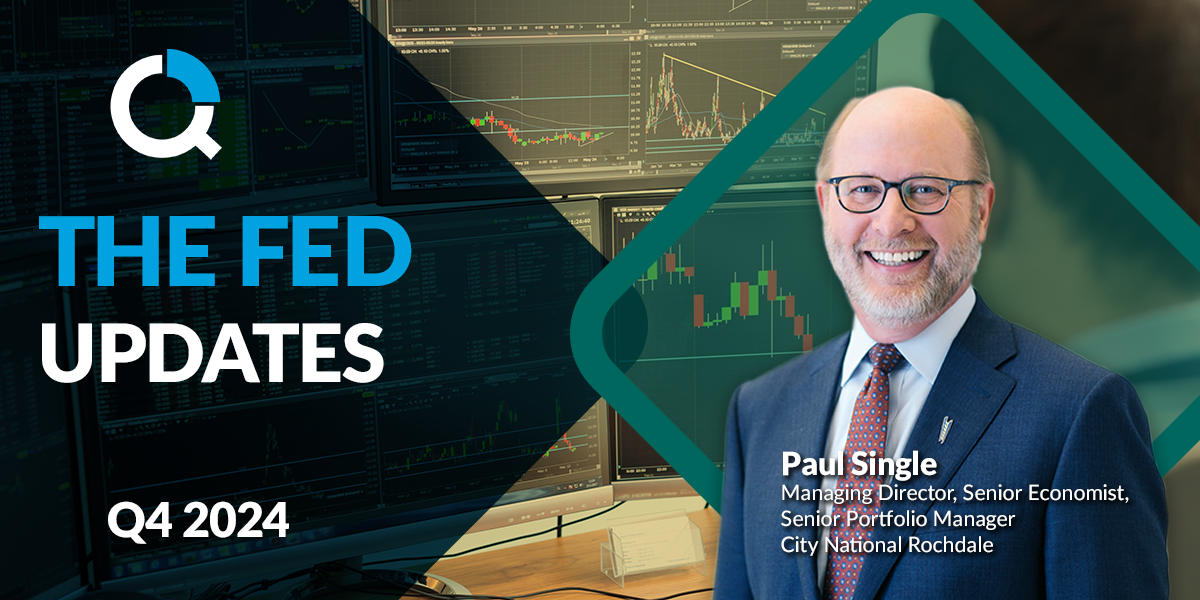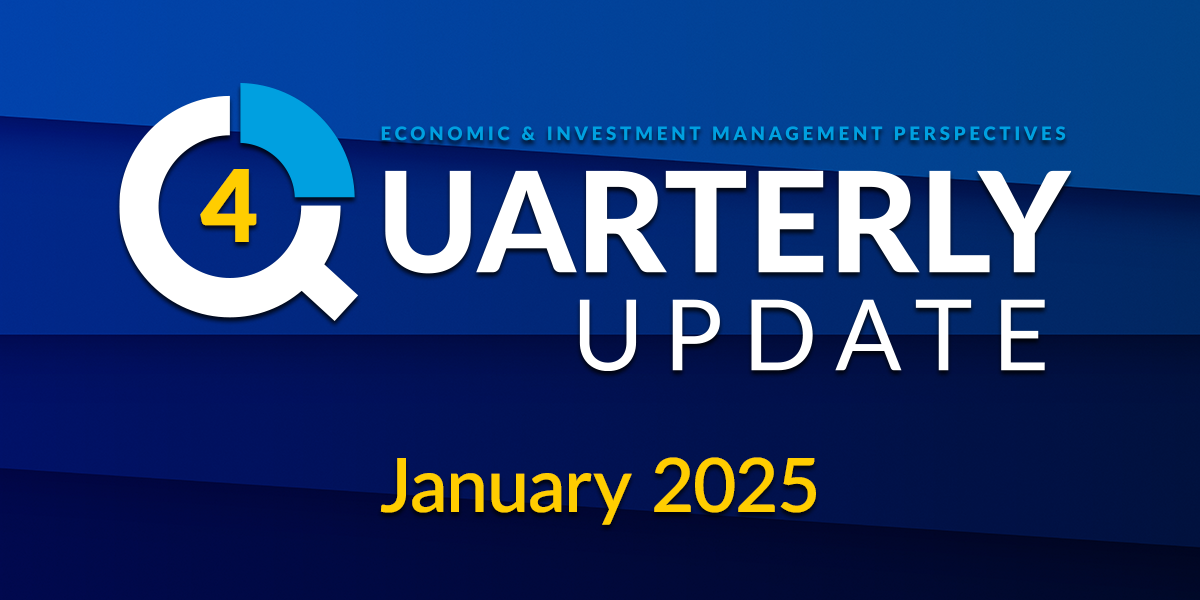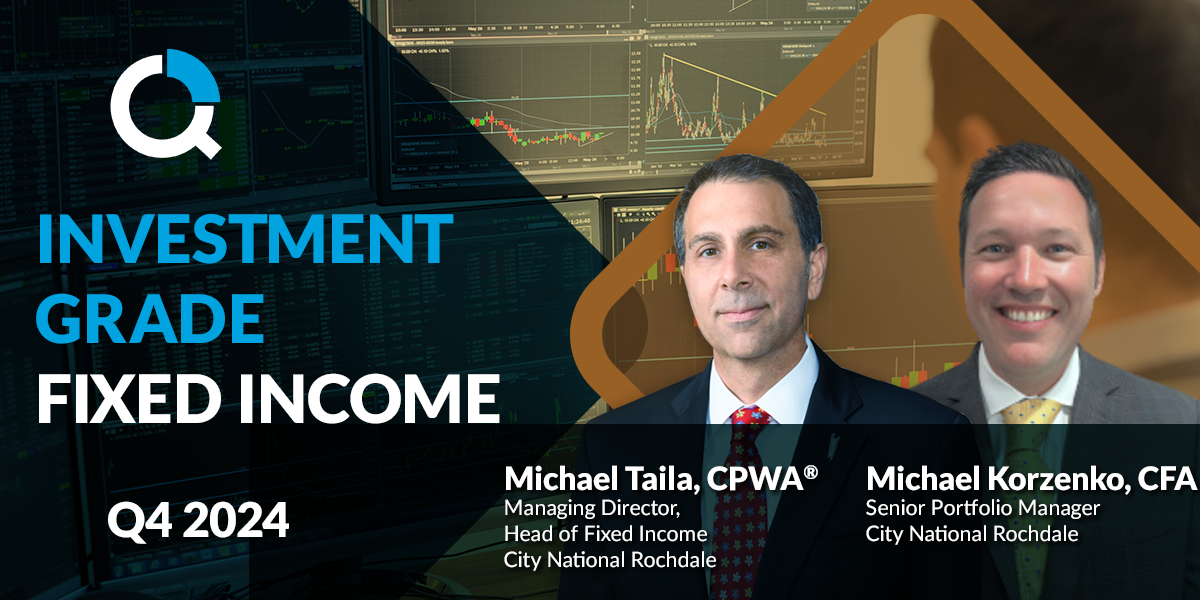
The Fed: The Fed Getting Ready to Cut Interest Rates
- The Federal Reserve Bank is getting ready to start cutting interest rates.
- Inflation has returned to its downward trajectory, increasing at just a 1.1% annualized rate (in the second quarter).
- The pace of consumer spending has moderated, and, more importantly, the pace of payroll gains has slowed.
The Federal Reserve Bank is getting ready to start cutting interest rates. We expect that the first cut will be 25 basis points at its September 18 meeting. For well over a year, the pace of economic growth has been slowing from its breakneck pace. However, inflationary pressures have not declined enough to warrant the lowering of interest rates. Since shortly after the Fed began its tightening of monetary policy, back in March of 2022, inflationary pressures have been declining (Chart 1).
Chart 1: Consumer Price Index
% change y-o-y, seasonally adjusted
Source: Bureau of Labor Statistics, Federal Reserve Bank, as of June 2024.
Information is subject to change and is not a guarantee of future results.
This was the result of increasing financing costs and the resolution of most post-pandemic logistical snarls. Inflation fell quickly to 3.0% in June 2023, following its peak of 9.1% in the previous June. For the rest of 2023, the inflation rate stabilized in the 3.0% to 3.5% range, frustrating the Fed. Then, in the first quarter of this year, it started to move back up, with an annualized rate of 4.6%, further disappointing the Fed, since the federal funds rate was at the highest level in more than two decades.
But, in the second quarter, inflation has returned to its downward trajectory, increasing at just a 1.1% annualized rate. This has given the policymakers greater confidence that inflation is heading down to the central bank’s target of a sustainable 2.0% rate.
This is happening at a crucial time as the economy continues to move into a more mature business cycle phase. The pace of consumer spending has been moderating, and, more importantly, the pace of payroll gains has slowed. The average monthly gain for the past three months (data can be volatile on a month-to-month basis) is 177,000, down almost 100,000 from a year ago (Chart 2). Although it’s still at a solid pace, and well above the approximate pace of population growth, the Fed is growing wary about the cooling pace.
Chart 2: Nonfarm Payrolls
‘000, seasonally adjusted
Source: Bureau of Labor Statistics, as of June 2024.
Information is subject to change and is not a guarantee of future results.
The Fed has a dual mandate, seeking maximum employment and price stability. For the past year, its focus has been battling inflation, since it was too high, and labor demand was strong. But now, the mandate is more balanced, so the Fed needs to start lowering interest rates to ensure continued economic growth.
Important Information
The views expressed represent the opinions of City National Rochdale, LLC (CNR) which are subject to change and are not intended as a forecast or guarantee of future results. Stated information is provided for informational purposes only, and should not be perceived as personalized investment, financial, legal or tax advice or a recommendation for any security. It is derived from proprietary and non-proprietary sources which have not been independently verified for accuracy or completeness. While CNR believes the information to be accurate and reliable, we do not claim or have responsibility for its completeness, accuracy, or reliability. Statements of future expectations,estimates, projections, and other forward-looking statements are based on available information and management’s view as of the time of these statements. Accordingly, such statements are inherently speculative as they are based on assumptions which may involve known and unknown risks and uncertainties. Actual results, performance or events may differ materially from those expressed or implied in such statements.
Investing involves risk including loss of principal. The market price of a security may move up and down, sometimes rapidly and unpredictably. The securities of mid-cap companies may have greater price volatility and less liquidity than the securities of larger capitalized companies. Larger, more established companies may be unable to attain the high growth rates of successful, smaller companies during periods of economic expansion. Current and future holdings are subject to risk. There is no guarantee the fund will achieve its stated objective.
City National Rochdale, LLC is an SEC-registered investment adviser and wholly-owned subsidiary of City National Bank. Registration as an investment adviser does not imply any level of skill or expertise. City National Bank is a subsidiary of the Royal Bank of Canada. City National Bank provides investment management services through its subadvisory relationship with City National Rochdale. Brokerage services are provided through City National Securities, Inc., a wholly-owned subsidiary of City National Bank and Member FINRA/SIPC.
Index Definitions
S&P 500 Index: The S&P 500 Index, or Standard & Poor’s 500 Index, is a market-capitalization-weighted index of 500 leading publicly traded companies in the US It is not an exact list of the top 500 US companies by market cap because there are other criteria that the index includes.
S&P 500 Growth: The S&P 500 Growth Index is a stock index administered by Standard & Poor’s-Dow Jones Indices. As its name suggests, the purpose of the index is to serve as a proxy for growth companies included in the S&P 500.
S&P 500 Value: The term S&P 500 Pure Value Index refers to a score-weighted index developed by Standard and Poor’s (S&P). The index uses what it calls a “style-attractiveness-weighting scheme” and only consists of stocks within the S&P 500 Index that exhibit strong value characteristics. The index was launched in 2005 and consists of 120 constituents, the majority of which are financial services companies.
S&P 500 Equal Weight: The S&P 500® Equal Weight Index (EWI) is the equal-weight version of the widely-used S&P 500. The index includes the same constituents as the capitalization weighted S&P 500, but each company in the S&P 500 EWI is allocated a fixed weight - or 0.2% of the index total at each quarterly rebalance.
DJDVP: The Dow Jones U.S. Select Dividend Index aims to represent the U.S.’s leading stocks by dividend yield.
Bloomberg Municipal Bond Index: The Bloomberg US Municipal Bond Index measures the performance of investment grade, US dollar-denominated, long-term tax-exempt bonds.
Bloomberg Municipal High Yield Bond Index: The Bloomberg Municipal High Yield Bond Index measures the performance of non-investment grade, US dollar-denominated, and non-rated, tax-exempt bonds.
Bloomberg Investment Grade Index: The Bloomberg US Investment Grade Corporate Bond Index measures the performance of investment grade, corporate, fixed-rate bonds with maturities of one year or more.
The Nasdaq Composite Index is a market capitalization-weighted index of more than 2,500 stocks listed on the Nasdaq stock exchange.
The Russell 2000 Index is a stock market index that measures the performance of the 2,000 smaller companies included in the Russell 3000 Index.
The Bloomberg Magnificent 7 Total Return Index is an equal-dollar weighted equity benchmark consisting of a fixed basket of 7 widely-traded companies classified in the United States and representing the Communications, Consumer Discretionary and Technology sectors as defined by Bloomberg Industry Classification System (BICS).
Definitions
Yield to Worst (YTW) is the lower of the yield to maturity or the yield to call. It is essentially the lowest potential rate of return for a bond, excluding delinquency or default.
P/E Ratio: The price-to-earnings ratio (P/E ratio) is the ratio for valuing a company that measures its current share price relative to its earnings per share (EPS).
The 4P analysis is a proprietary framework for global equity allocation. Country rankings are derived from a subjective metrics system that combines the economic data for such countries with other factors including fiscal policies, demographics, innovative growth and corporate growth. These rankings are subjective and may be derived from data that contain inherent limitations. MSCI Emerging Markets Asia Index is a free float-adjusted market capitalization index that is designed to measure equity market performance in the Asian emerging markets.
City National Rochdale Proprietary Quality Ranking formula: 40% Dupont Quality (return on equity adjusted by debt levels), 15% Earnings Stability (volatility of earnings), 15% Revenue Stability (volatility of revenue), 15% Cash Earnings Quality (cash flow vs. net income of company) 15% Balance Sheet Quality (fundamental strength of balance sheet).
*Source: City National Rochdale proprietary ranking system utilizing MSCI and FactSet data. **Rank is a percentile ranking approach whereby 100 is the highest possible score and 1 is the lowest. The City National Rochdale Core compares the weighted average holdings of the strategy to the companies in the S&P 500 on a sector basis. As of September 30, 2022. City National Rochdale proprietary ranking system utilizing MSCI and FactSet data.
© 2024 City National Bank. All rights reserved.
Non-deposit investment Products are: • not FDIC insured • not Bank guaranteed • may lose value
Stay Informed.
Get our Insights delivered straight to your inbox.
More from the Quarterly Update
Put our insights to work for you.
If you have a client with more than $1 million in investable assets and want to find out about the benefits of our intelligently personalized portfolio management, speak with an investment consultant near you today.
If you’re a high-net-worth client who's interested in adding an experienced investment manager to your financial team, learn more about working with us here.




